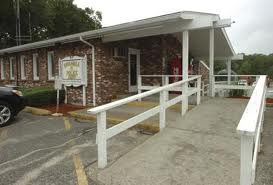Having a wheelchair ramp gives disabled people easy access. Aside from that, the ramp can also boost the value of your home. Here is how you can build a wheelchair ramp.
Required Tools and Materials
Nuts and bolts
Posthole digger
Landscape fabric
Pre-mixed concrete
Wooden pads
Treated plywood
Plumb bob
Powdered chalk
Choose whether you will put the ramp in the porch or deck. Next, measure the porch or deck where you will connect the ramp. The ramp must match the deck per every inch height. For instance, the ramp has to be 15 feet long if the deck is 15 inches high.
Step 2
Sketch the ramp outline. Read the Americans with Disabilities Act so your ramp will meet the standards. Also check the local building code for other information.
Step 3
Set the landing down. Make it a five foot square. Set the posts in all the square corners. Lay the landing down while using the mason’s lines. Utilize the 3-4-5 triangle to keep the sides level.
Step 4
Set the outside edges and repeat the steps above.
Step 5
Take out the sod. Dig the soil out. It has to be three inches for the site and four inches for the bottom.
Step 6
Lay down the posts with masking tape. Set this on the landing. Place them every 5 feet.
Step 7
Use the pothole digger to dig holes. Set the holes under the frost line by six inches. Taper the openings from a foot on the top.
Step 8
Set the fiber tube. Ensure the hole depth is six inches higher compared to the fiber tube when you build a wheelchair ramp.
Step 9
Get a 2 x 4” wood. Nail it on the forms’ opposite sides. Put the form eight inches from the holes’ bottoms.
Step 10
Put the posts in the holes. Plumb it with a level. Secure them with braces.
Step 11
Ready the concrete and have the forms filled. Level it using the trowel. Let it dry for 48 hours. Take out the forms.
Step 12
Put in 2 x 6 crossbeams. Bolt them using nuts and washers.
Step 13
Add the landing. Put in the joists. These will be used for the railing. These can measure 2 x 6 inches. Join these onto the posts.
Before you build a wheelchair ramp, get in touch with the utility companies. Ensure you don’t hit any wiring or underground pipes. Check also if a license or special permit will be needed.



